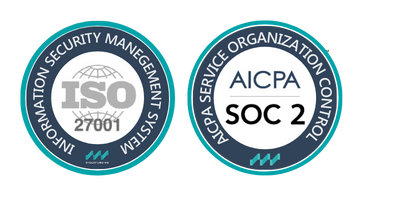Merchant acquirers are faced with a challenging environment and will have to face further risks. The credit risk process needs to be effective and quick.
Paradigm shift providing merchant acquirers with the opportunity to either follow in the footsteps of Stripe or fall behind.
Introduction
The payments industry is both complex and intricate, and it is worthwhile to briefly review how it traditionally operates to fully understand its transformation. At its core, the payment value chain consists of three primary entities mediating transactions between customers and merchants: merchant acquirers, card networks, and issuing banks.
Merchant acquirers are financial institutions that handle payment transactions on behalf of merchants. Card networks, such as Visa and Mastercard, provide the infrastructure that allows payments to flow between parties. Finally, issuing banks are responsible for supplying credit and debit cards to customers, acting on behalf of the card networks. These three entities work seamlessly behind the scenes every time a card transaction occurs.
For example, when we pay for a morning coffee, our simple act of tapping the payment terminal or entering a PIN sets off a highly sophisticated chain reaction. The transaction is sent to the merchant’s acquiring bank, which forwards it to the card network, and then to the customer’s issuing bank. The issuing bank checks if the customer has sufficient funds or credit to complete the purchase. If approved, confirmation travels back through the chain—from the issuing bank, through the card network, to the acquiring bank—until the merchant receives authorisation. This process takes mere seconds, concluding when the terminal displays “PAYMENT ACCEPTED.”
This is a high-level explanation of the traditional payment value chain. However, in recent years, new elements have been introduced, including risk intelligence platforms and credit monitoring tools, which have transformed the industry.
Additional intermediaries, such as independent sales organisations (ISOs), have also emerged. Companies like Stripe act as intermediaries between merchants and acquiring banks by aggregating and simplifying payments. Similarly, payment facilitators (PayFacs) and payment service providers (PSPs) offer data-driven decision-making tools to optimise the process. These innovations have blurred traditional boundaries, increased competition, and introduced tools like credit risk automation and AI-powered credit decisioning to modernise the system further.
Directives like PSD2 have also played a key role in reshaping the industry, encouraging competition and innovation. As the payments landscape evolves, stakeholders increasingly rely on advanced technologies—such as credit risk assessment platforms and automated credit monitoring solutions—to remain competitive and manage risks effectively.
The rise of Credit Risk
The first key point to note is that merchant acquirers serve as both the starting and ending points in the payment cycle when merchants and customers engage in a transaction. In this sense, they effectively open and close the payment process.
The second key point is that, throughout the payment chain described earlier, no actual money is being transferred during the initial transaction. Instead, what is being passed along are a series of requests and confirmations verifying whether the customer has sufficient funds to complete the transaction. The actual payment occurs a few days later, when the merchant aggregates all its transactions over that period and submits them to the merchant acquirer. The merchant acquirer then processes these, claims the funds from the corresponding banks, and finally transfers the payments to the merchant. This delay explains why, when you make a card payment, the funds do not immediately leave your account.
Due to this process, merchant acquirers are exposed to three primary types of risk:
- Card refunds, where the merchant voluntarily returns money to the consumer.
- Card reversals, where the merchant cancels the payment after authorisation but before settlement.
- Card chargebacks, which are initiated by the consumer after settlement. Chargebacks often arise from disputes over the transaction, failure to receive the goods or services, or issues such as merchant bankruptcy.
We will now focus on chargebacks, as they present the most significant risk to merchant acquirers and often evolve into a form of credit risk, as outlined below.
Since no money is exchanged at the time of the initial transaction, the merchant acquirer essentially extends a “line of credit” to the merchant on behalf of the customer. In turn, the merchant guarantees to provide the purchased goods or services. However, if the merchant goes bankrupt and fails to deliver the promised goods or services, customers typically file for chargebacks against the merchant.
When the merchant is bankrupt, the chargeback is automatically redirected to the merchant acquirer, as they were the entity that effectively extended the “line of credit.” This is a specific scenario in which chargebacks can significantly impact merchant acquirers, turning into a credit risk.
Chargebacks, however, are a routine challenge for merchant acquirers. Card networks impose strict compliance standards, such as maintaining a monthly chargeback rate below 1%. If this threshold is exceeded, the acquirer may face fines or even lose its partnership with the card network.
To mitigate these risks, merchant acquirers typically conduct thorough due diligence and implement Know Your Customer (KYC) procedures before onboarding new merchants. These measures ensure acquirers have confidence in their clients’ financial stability or, in the case of weaker financial positions, that contingency plans are in place. Historically, these measures have proven effective, enabling merchant acquirers to maintain confidence in their clients’ financial health.
Unfortunately, the COVID-19 pandemic and its subsequent economic repercussions have disrupted this equilibrium. Many businesses, previously deemed financially secure, have experienced sudden and severe financial difficulties, placing merchant acquirers in a vulnerable position. This new reality has amplified the importance of credit risk management tools, such as risk intelligence platforms and credit monitoring solutions, to help acquirers navigate these challenges and safeguard their operations.
COVID-19 from an economic perspective
For over a year, COVID-19 has forced virtually all businesses and individuals to adapt to a new normal, causing a drastic fall in revenue across almost all sectors. Social distancing, curfews, and limited services, though necessary health precautions, have significantly disrupted economic activity. Juniper Research (2020) suggests that global retail spending dropped by 14%, directly impacting the payments industry. McKinsey (2021) found that the payments industry, which had been growing by around 7% annually, experienced a decline of 5%-7% compared to revenues from the previous year. In an effort to prevent a severe recession, European governments introduced expansive monetary and fiscal policies, injecting government-backed debt into the economy at unprecedented levels. To put this into perspective, the fiscal response to the COVID-19 crisis was three times greater than that of the 2008-2009 financial crisis. Fiscal packages have been estimated to exceed $10 trillion globally (McKinsey, 2021), with Western European countries allocating around $4 trillion collectively (McKinsey, 2021). This figure is approximately 30 times greater than the value of the Marshall Plan, adjusted to present-day values (McKinsey, 2021).
In the UK, these measures materialised in the form of the Coronavirus Business Interruption Loan Scheme (CBILS), Bounce Back Loan Scheme (BBLS), and Coronavirus Large Business Interruption Loan Scheme (CLBILS), collectively issuing approximately £70 billion in debt (House of Commons Library, 2021). Nearly all businesses were granted access to these schemes, leading to over 1.5 million businesses taking out loans to avoid insolvency (AccountancyDaily, 2021). As a result, insolvency rates towards the end of 2020 were better than those in 2019, with UK insolvencies falling by 34% and liquidations by 41% (The Insolvency Service, 2020).
While these schemes initially prevented a wave of bankruptcies, they may have merely delayed them. Many businesses, having overleveraged themselves on these loans while suffering significant declines in revenue, now face severely damaged business credit scores. Overleveraged accounts and poor credit risk profiles mean that many of these companies fall outside the risk appetite of lenders, further restricting their ability to repay loans or secure additional funding. This is becoming apparent with the new British financial aid initiative, the Recovery Loan Scheme (RLS). Designed to replace CBILS and BBLS, the RLS has stricter credit checks and significantly higher interest rates—reaching as high as 15%—which makes qualifying for the scheme much more difficult. One of the UK’s largest banks reported receiving fewer than 500 viable applications on the second day of the RLS launch, in stark contrast to the 2,000 applications it approved in the first two days of the BBLS rollout (SmallBusiness, 2021).
Compounding these challenges, businesses must now operate under difficult economic conditions while managing the repayment of existing loans. This situation increases the risk of bankruptcies and, consequently, the risk of merchant acquirers facing rising chargebacks. Merchant acquirers, who play a pivotal role in managing credit portfolios, are particularly exposed to this type of credit risk, especially as the financial position of many merchants continues to deteriorate. Effective tools, such as credit risk data platforms or risk management software, could be instrumental in helping acquirers mitigate these challenges by enabling better risk assessment AI and credit monitoring.
Despite these difficulties, the payments industry has also experienced some positive developments during the pandemic, as consumer purchasing habits have shifted towards e-commerce and digital payments. This change has provided new opportunities for growth, demonstrating the industry’s resilience and capacity to adapt to rapidly changing economic and consumer landscapes.
COVID-19 from a behavioural perspective
Aside from its economic impact, COVID-19 has also significantly altered customer purchasing habits. This change is not limited to what customers spend their money on, but also extends to how they make payments. Health concerns during the pandemic have accelerated the adoption of digital payments over cash. Although the majority of transactions globally were still conducted in cash prior to the pandemic, this percentage was already declining—falling from 89% in 2013 to 77% in 2019 (Economist, 2019). The COVID-19 crisis has amplified this trend. In 2020, digital wallets accounted for 25.7% of point-of-sale (POS) transactions, while cash represented only 20.5%. The increased use of digital payments has also driven the rapid expansion of e-commerce by providing a faster and more convenient payment experience. During 2020, omnichannel shopping sales increased by 50% (Nielsen, 2020). Omnichannel platforms offer customers multiple ways to shop online and receive their products—most of which exclude cash from the transaction. This reflects a growing shift away from cash as digital payments become the preferred alternative.
These trends are likely to persist in the post-COVID era. A Mastercard study conducted in 2020 revealed that 79% of people globally used contactless payments at POS terminals, and 74% of them indicated they would continue using contactless payments after the pandemic (Mastercard, 2020). Such developments provide merchant acquirers with an expanding market of digital payment users, creating new opportunities for growth. However, while the pandemic has increased the risk of chargebacks, it has also accelerated the digitalisation of payment systems, intensifying market demand.
This digital transformation has not only reshaped customer behaviour but also introduced complexities in credit risk management for merchant acquirers. With more transactions occurring online, tools like risk intelligence platforms and credit monitoring software are becoming essential for managing credit portfolios and mitigating the risks associated with borrower default risk assessment.
Beyond these changes, another significant factor driving the shift in the payments landscape is the PSD2 regulation, which continues to influence the industry’s evolution.
Introduction of the PSD2
Another challenge faced by merchant acquirers is the introduction of the Payment Services Directive 2 (PSD2), which went into effect at the end of 2020. The directive aims to increase security and consumer choice by enabling third-party payment providers (TPPs) to enter the industry. TPPs allow businesses to accept online payments through open banking, eliminating the need to go through traditional payment networks (Sage, 2020). However, the services of TPPs are not limited to companies like PayPal; any merchant or even merchant acquirer can become a TPP. All that’s required is a Payment Initiation Service Provider (PISP) license and an Account Information Service Provider (AISP) license. These two licenses allow both merchants and merchant acquirers to request open banking information from clients, and, if accepted, initiate payments on their behalf (CardAlpha Consulting, 2018). This enables merchants to integrate their digital payments into their own value chain. However, it’s important to note that for open banking transactions to occur, user consent is required.
The inclusion of TPPs in the industry is not only intensifying competition but also blurring the lines within the sector. Since the introduction of PSD2 in 2018, the use of TPPs has surged: from 2018 to 2020, the number of API calls made jumped from 55.8 million to almost 5.1 billion (Payments Industry Intelligence, 2021). A survey by the Open Banking Implementation Entity and Ipsos MORI revealed that since the onset of the pandemic, the UK’s small business community has increasingly embraced the services provided by open banking providers as businesses look to future-proof their operations (Open Banking, 2020).
The rise of TPPs is expected to further intensify competition between different players in the payments market, forcing merchant acquirers to take on higher levels of credit risk to remain competitive. This comes at a time when merchant acquirers are already facing much higher credit risk than before, as discussed previously. As competition strengthens, merchant acquirers must ensure that their credit risk management processes are both effective and efficient to handle these added pressures.
Opportunity, threat & speed
As demonstrated, the payments industry is undergoing a fundamental paradigm shift, driven both by regulatory changes and the acceleration of digitalisation trends that were already taking place. These changes present merchant acquirers with both opportunities and threats, as well as an urgent need for speed in adapting to the evolving landscape. On one hand, the COVID-19 pandemic has significantly exacerbated digitalisation trends within the retail sector, leading to an increased use of digital payments. This shift has created a rapidly growing market, offering merchant acquirers a chance to capitalize on this expansion by onboarding new clients. On the other hand, the pandemic has also heightened the risk of bankruptcies, particularly among SMEs. Therefore, while merchant acquirers are eager to leverage the expanding market, it is crucial to approach this opportunity in a risk-controlled manner to mitigate the potential for chargebacks.
In addition to these trends, the regulation changes introduced at the end of 2020 have introduced new players into the payments ecosystem—Third-Party Providers (TPPs). The key competitive advantage of TPPs lies in their ability to leverage open banking to facilitate payments, effectively bypassing the traditional payment chain. Although commissions charged by TPPs tend to be higher than those of merchant acquirers, the setup process is simpler and less expensive, making them particularly appealing to small retailers. By using open banking, payments are processed instantly, with funds transferred directly from the customer’s bank to the merchant’s bank. Even though any merchant acquirer or merchant can become a TPP, the entry of these companies and their innovative services gives merchants more options for processing payments. More options for merchants mean heightened competition for merchant acquirers.
As a result, the need for speed becomes even more crucial. Merchant acquirers must act quickly to capitalize on the growing number of opportunities emerging from market growth, while also differentiating between viable and non-viable customers—especially considering the risks posed by overleveraging and potential credit defaults. The intensifying competition from TPPs and other market players only adds pressure to merchant acquirers to implement effective credit risk management processes and act swiftly to stay competitive.
Wiserfunding works for today and not just yesterday
Pre-COVID-19, the payments industry was heavily reliant on manual processes that created significant bottlenecks in the system. For instance, according to Stripe, the underwriting process could take anywhere from 5 to 12 months. Additionally, credit risk analyses and monitoring of companies were traditionally carried out by teams of analysts, whose primary task was to gather as much data as possible on a regular basis to conduct ongoing analyses. Stripe also reported that these manual processes cost around a quarter of a million pounds annually. However, with the onset of the COVID-19 pandemic, these face-to-face, time-consuming, and manual processes had to be digitised at an unprecedented speed. While this transition was essential, achieving a swift and effective implementation that delivers positive outcomes has proven to be a challenge.
At Wiserfunding, we aim to address these pain points with digital solutions designed to enhance efficiency and accuracy in the credit risk assessment process. The table below illustrates how we provide solutions to each of these pain points:
Pain-Point: Opportunity
Wiserfunding Solution: Prospecting Tool
Our prospecting tool empowers merchant acquirers to generate extensive lists of potential clients, applying filters to ensure they match the company’s target market and risk levels. This tool helps merchant acquirers quickly identify new opportunities that fit within their risk profile, allowing them to seize these opportunities promptly.
Pain-Point: Threat
Wiserfunding Solution: Credit Rating Tool
Our credit rating tool allows merchant acquirers to generate comprehensive credit reports for companies with a turnover of up to £200 million in less than ten seconds. These reports combine academic expertise and years of credit risk experience, providing over 200 data points, including an SME-Z score (an S&P equivalent rating), one-year point-in-time probability of default (PD), and loss given default (LGD). Our reports are 30% more accurate than the market standard.
Pain-Point: Speed
Wiserfunding Solution: Automation
Both solutions are fully digitised, offering instant results. We take a holistic approach by providing insights not only into the company but also into the broader industry and country contexts. Many clients use these tools for initial screening, as they allow for the rapid processing of large volumes of companies. This helps merchant acquirers quickly identify and differentiate viable from non-viable companies, providing them with a competitive advantage in the market.
Conclusions
There is no doubt that the payments industry is undergoing a significant paradigm shift, accelerated by the ongoing pandemic. This shift places merchant acquirers under additional pressure due to their exposure to a specific type of credit risk. Not only are merchant acquirers facing heightened risks from a credit risk standpoint, but they are also contending with increased competition and an ever-expanding number of opportunities. Over the next year, merchant acquirers will need to manage all these dynamics, along with potential new challenges, if they want to stay competitive and achieve success, much like Stripe has done. However, it is crucial to view these changes not as threats to their presence in the industry, but as opportunities to strengthen their position and emerge stronger.
At Wiserfunding, we are committed to helping merchant acquirers navigate these turbulent times. Our goal is to ensure that when the tides of change eventually stabilize, your business is well-positioned to succeed. We believe that our prospecting and credit rating tools can help merchant acquirers quickly identify viable opportunities while steering clear of potential risks. By leveraging these tools, merchant acquirers can capitalize on existing opportunities and prepare for those that lie ahead.
Our services go beyond upfront merchant selection. We constantly update our databases to reflect changes in merchant conditions, helping you track improvements or deteriorations in risk profiles over time. This ensures that you stay informed and equipped to make the best decisions at every stage.
SIMILAR POSTS

3 November 2023
Unlocking new opportunities for SME lending in the GCC
Although the current numbers of SME employees in the GCC may be far below global averages, the ambition is not. [...]

11 October 2023
The role of Capital Markets in supporting SMEs funding in the LAC region
Wiserfunding's most recent blog post discusses our founders most recent study, sponsored by the Inter-American Development Bank, on how capital [...]

4 October 2023
Can capital markets play a vital role in supporting SME financing?
Wiserfunding's most recent blog post discusses the benefits of increasing support for SME funding through capital markets. In the wake [...]



